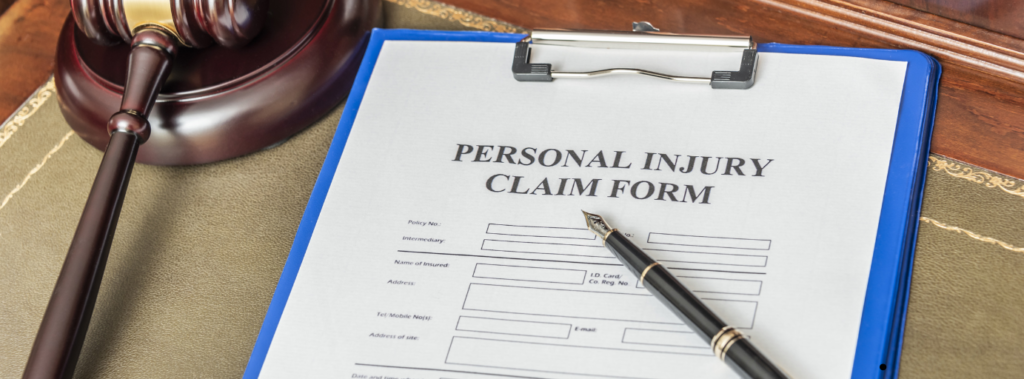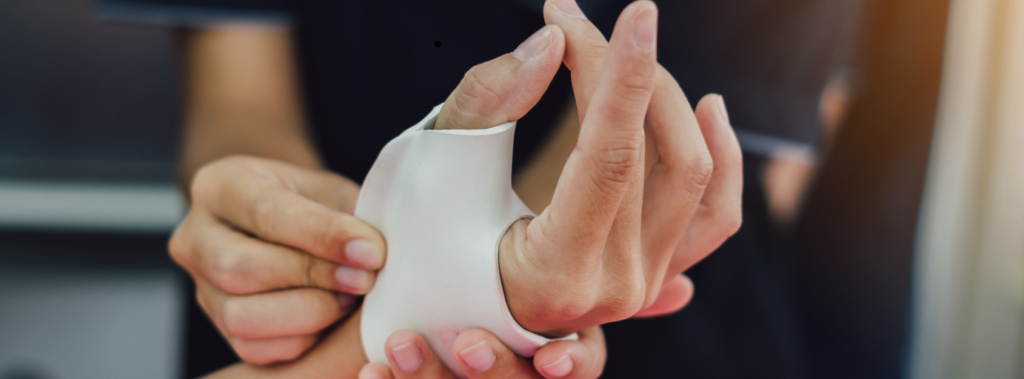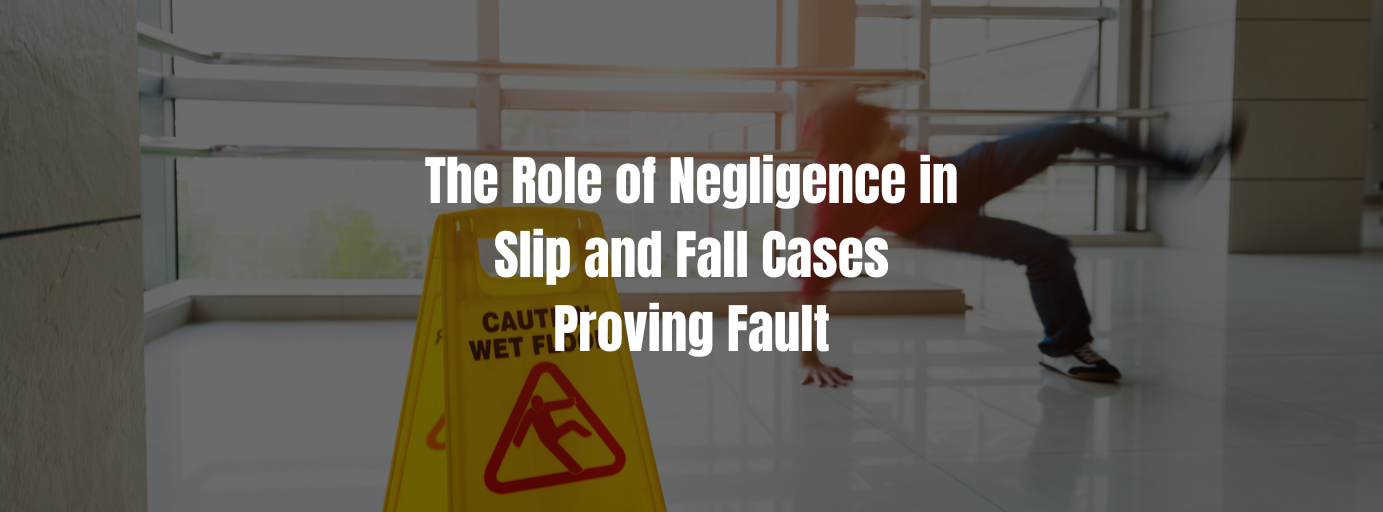Introduction
Slip and fall accidents can happen anywhere, from grocery stores to office buildings, and can result in serious injuries. In Toronto, property owners and occupiers have a legal duty to maintain safe premises and address potential hazards that could lead to slip and fall incidents. When they fail to uphold this duty, they may be held liable for any resulting injuries under premises liability laws.
According to a recent study by the Toronto Injury Clinic, slip and fall accidents account for nearly 20% of all personal injury claims in the city. These accidents can have devastating consequences, ranging from broken bones and head injuries to spinal cord damage and even fatalities. Victims often face mounting medical expenses, lost wages, and a diminished quality of life.
If you or a loved one has been injured in a slip and fall accident in Toronto, it’s crucial to understand your rights and the steps involved in proving negligence on the part of the property owner or occupier. By establishing their liability, you may be able to recover compensation for your losses and expenses.
What Constitutes Negligence by a Property Owner in a Slip and Fall Case?
Under Ontario’s Occupiers’ Liability Act, property owners and occupiers have a legal duty of care to ensure that their premises are reasonably safe for visitors and to address any potential hazards. Failure to meet this duty can constitute negligence, which is a key element in slip and fall premises liability claims.
Negligence in a slip and fall case can take many forms, including:
- Failure to properly maintain the premises, such as allowing floors to become uneven, cluttered, or slippery
- Inadequate lighting in walkways, stairwells, or parking areas
- Failure to address weather-related hazards like snow, ice, or standing water
- Failure to provide proper warning signs or barriers around potential hazards
- Failure to repair or replace defective or damaged surfaces, such as cracked pavement or loose tiles
Examples of hazardous conditions that could lead to a slip and fall accident include:
- Spills or debris on the floor
- Torn or loose carpeting
- Uneven or cracked pavement
- Inadequate lighting
- Lack of handrails or guardrails
- Snow or ice accumulation
- Wet or slippery surfaces
Property owners and occupiers must take reasonable steps to identify and address these types of hazards to fulfill their duty of care.
Common Hazardous Conditions That Lead to Slip and Fall Accidents
Slip and fall accidents can occur due to various hazardous conditions on a property. Here are some of the most common culprits:
- Poor Maintenance
- Uneven or cracked floors
- Cluttered walkways
- Lack of handrails or guardrails
- Loose or torn carpeting
- Inadequate floor mats or entrance matting
- Inadequate Lighting
- Poorly lit stairwells, hallways, or parking areas
- Burnt-out light bulbs or fixtures
- Lack of emergency lighting
- Weather-Related Hazards
- Accumulated snow or ice on walkways or parking lots
- Failure to salt or sand icy surfaces
- Standing water or puddles due to rain or melting snow
- Defective or Damaged Surfaces
- Cracked or uneven pavement
- Loose or missing tiles or floorboards
- Potholes or cracks in parking lots or sidewalks
- Lack of Warning Signs or Barriers
- Failure to clearly mark or cordon off areas under construction or repair
- No caution signs for wet floors or other hazards
It is the responsibility of property owners and occupiers to identify and address these hazardous conditions promptly to prevent slip and fall accidents from occurring.

Establishing the Elements of a Premises Liability/Negligence Claim
To successfully pursue a premises liability claim for a slip and fall injury in Toronto, you must establish the following four elements:
- Duty of Care: The property owner or occupier owed you a duty of care to maintain reasonably safe premises.
- Breach of Duty: The property owner or occupier breached their duty of care by failing to address a hazardous condition or take reasonable precautions to prevent harm.
- Causation: The breach of duty directly caused your slip and fall accident and resulting injuries.
- Damages: You suffered quantifiable damages, such as medical expenses, lost wages, pain and suffering, or other losses.
Proving these elements can be complex, as it requires gathering and presenting compelling evidence to support your claim.

Types of Injuries in Slip and Fall Accidents
Slip and fall accidents can result in a wide range of injuries, some of which can have long-lasting or permanent effects on the victim’s life. Common injuries include:
- Head and Brain Injuries: Concussions, traumatic brain injuries (TBIs), skull fractures, and other head injuries can occur if the victim falls and strikes their head on the ground or another surface.
- Spinal Cord Injuries: Serious falls can cause spinal cord injuries, leading to partial or complete paralysis, loss of sensation, and other debilitating effects.
- Broken Bones: Fractures to the wrists, arms, hips, legs, or other bones are common in slip and fall accidents, especially among older adults with osteoporosis.
- Soft Tissue Injuries: Strains, sprains, and tears to muscles, ligaments, and tendons can occur from the impact or force of the fall.
- Back and Neck Injuries: Herniated discs, whiplash, and other back and neck injuries can result from the sudden jerking motion or impact during a fall.
Many slip and fall victims require extensive medical treatment, rehabilitation, and ongoing care, which can be costly and impact their ability to work or maintain their quality of life. In severe cases, injuries may lead to permanent disability or even death.
Due to the potential severity of these injuries, it is crucial to seek legal representation from an experienced personal injury lawyer if you or a loved one has been involved in a slip and fall accident. They can help you navigate the claims process and pursue fair compensation for your losses.
Key Evidence Needed to Prove Negligence
To establish negligence and liability in a slip and fall case, you will need to collect and present compelling evidence. This evidence can include:
- Photographs and Videos: Visual documentation of the accident scene, hazardous conditions, and your injuries can be invaluable in supporting your claim.
- Witness Statements: Testimony from eyewitnesses who observed the accident or the hazardous condition can corroborate your account.
- Medical Records: Detailed medical records documenting the nature and extent of your injuries, as well as the treatment received, can help substantiate your damages.
- Expert Testimony: Depending on the circumstances, you may need to enlist the services of expert witnesses, such as safety inspectors, accident reconstruction specialists, or medical experts, to provide professional opinions and analysis.
- Documentation of Prior Complaints or Incidents: Evidence that the property owner or occupier was aware of the hazardous condition but failed to address it can strengthen your case.
- Surveillance Footage: If available, surveillance camera footage from the property can provide visual evidence of the accident or the hazardous condition.
It is important to act quickly after a slip and fall accident to collect and preserve as much evidence as possible. An experienced personal injury lawyer can guide you through this process and help you build a strong case.
Dealing with Comparative/Shared Negligence
In some slip and fall cases, the property owner or occupier may argue that the victim share some degree of fault or negligence for the accident. This is known as contributory negligence or comparative negligence.
Examples of potential contributory negligence by the victim may include:
- Failure to watch where they were walking or pay attention to their surroundings
- Wearing inappropriate or unsafe footwear for the conditions
- Ignoring warning signs or barriers
- Engaging in reckless or careless behavior
If the court finds that the victim’s own negligence contributed to the accident, their potential compensation may be reduced proportionately. For instance, if the victim is found to be 20% at fault, their awarded damages would be reduced by 20%.
It is essential to address and refute any allegations of contributory negligence to maximize your potential compensation. A skilled personal injury lawyer can help argue against such claims and protect your rights.
Statute of Limitations for Slip and Fall Injury Claims in Ontario
In Ontario, there is a strict statute of limitations, or time limit, for filing a slip and fall injury claim. This time limit is governed by the Limitations Act, which sets the deadline for initiating legal proceedings. Failing to file a claim within the prescribed time frame can result in the loss of your right to seek compensation, regardless of the merits of your case.
According to the Limitations Act, the general limitation period for most personal injury claims, including slip and fall cases, is two years from the date of the incident or injury. This means that you must file your claim with the appropriate court within two years of the date when the slip and fall accident occurred.
It’s crucial to note that there are some exceptions to this two-year limitation period. For instance, if the injured person was a minor (under the age of 18) at the time of the accident, the limitation period does not begin to run until they turn 18. Additionally, if the injured person was legally incapable of commencing a proceeding due to a physical, mental, or psychological condition, the limitation period may be extended or suspended.
Failing to file a slip and fall claim within the applicable limitation period can have severe consequences. The court may dismiss your case entirely, even if you have a valid claim and compelling evidence of negligence. This is why it’s essential to act promptly and seek legal advice from a qualified personal injury lawyer as soon as possible after a slip and fall accident.
An experienced lawyer can help you understand the specific limitation period that applies to your case and ensure that your claim is filed before the deadline expires. They can also advise you on any potential exceptions or extensions that may apply in your situation.
Example: Missing the Statute of Limitations
Consider the following hypothetical example:
On May 1, 2021, Jane was injured in a slip and fall accident at a grocery store due to a poorly maintained entrance mat. She suffered a broken ankle and missed several weeks of work. Jane decided to handle the claim herself and did not seek legal advice immediately.
By the time Jane contacted a personal injury lawyer on June 1, 2023, the two-year limitation period had already expired. Despite having a valid claim and evidence of the grocery store’s negligence, Jane’s case was dismissed by the court due to the missed deadline.
This example illustrates the importance of acting promptly and consulting with a lawyer as soon as possible after a slip and fall accident. Missing the statute of limitations can be a costly mistake that prevents you from recovering the compensation you deserve.
The Importance of Experienced Toronto Premises Liability Lawyers
Navigating a slip and fall injury claim can be a complex and daunting process, especially when trying to prove negligence and establish liability. This is why it’s crucial to have an experienced Toronto premises liability lawyer on your side.
Skilled personal injury lawyers who specialize in slip and fall cases can provide invaluable assistance throughout the claims process, including:
- Investigation: They will conduct a thorough investigation of the accident, gather evidence, and identify all potentially liable parties.
- Case Evaluation: They will assess the strength of your case, the extent of your damages, and the likelihood of success based on their experience and knowledge of the law.
- Negotiation: Many slip and fall cases are resolved through negotiations with insurance companies or the liable parties. Experienced lawyers are skilled negotiators who can fight for a fair settlement on your behalf.
- Litigation: If a reasonable settlement cannot be reached, your lawyer will be prepared to take your case to court and present a compelling argument before a judge or jury.
- Handling Documentation and Paperwork: Navigating the legal paperwork and documentation required for a slip and fall claim can be overwhelming. Your lawyer will handle these tasks efficiently and accurately.
- Adherence to Deadlines: As discussed earlier, missing the statute of limitations can be detrimental to your case. An experienced lawyer will ensure that all necessary filings and actions are taken within the prescribed time limits.
- Access to Resources: Reputable law firms have access to a network of expert witnesses, accident reconstructionists, and other resources that can strengthen your case.
When choosing a premises liability lawyer in Toronto, it’s essential to consider their experience, track record of success, communication skills, and overall commitment to your case. Look for a lawyer or law firm that specializes in slip and fall cases and has a proven history of obtaining favorable outcomes for their clients.
Example: The Value of an Experienced Premises Liability Lawyer
Consider the following real-life example:
In 2019, a Toronto man named Michael was involved in a severe slip and fall accident at a local shopping mall. He slipped on a wet floor that lacked proper warning signs and sustained a traumatic brain injury (TBI) and multiple fractures.
Michael’s family hired Diamond & Diamond Lawyers, a reputable personal injury law firm in Toronto, to handle his case. The firm’s experienced premises liability lawyers conducted a thorough investigation, gathering evidence such as surveillance footage, witness statements, and expert medical opinions.
Through skilled negotiations and the threat of litigation, Diamond & Diamond Lawyers secured a multi-million dollar settlement for Michael, covering his past and future medical expenses, lost wages, and pain and suffering.
This example highlights the value of having an experienced premises liability lawyer on your side. Without the expertise and resources of a skilled legal team, Michael’s case may not have been resolved as favorably, leaving him and his family with a significant financial burden.
Conclusion
Slip and fall accidents can have devastating consequences, both physically and financially. If you or a loved one has been injured due to the negligence of a property owner or occupier in Toronto, it’s crucial to understand your rights and take the necessary steps to pursue a premises liability claim.
Proving negligence and establishing liability in a slip and fall case can be a complex process that requires gathering compelling evidence, navigating legal procedures, and adhering to strict deadlines. By working with an experienced Toronto premises liability lawyer, you increase your chances of a successful outcome and fair compensation for your losses.
Remember, time is of the essence in these cases. Don’t hesitate to seek legal advice as soon as possible after a slip and fall accident. Your lawyer can guide you through the process, protect your rights, and fight for the justice and compensation you deserve.
The Claim Settlement Advantage
Turn to our experienced network of personal injury lawyers for assistance. At Claim Settlement, our team of legal experts boasts over 30 years of collective experience in successfully handling personal injury and accident cases, securing millions of dollars in settlements for our clients.
We understand the challenges you’re facing, and our mission is to provide unwavering support and advocacy throughout the legal process. With our expertise and resources, you can focus on your recovery while we handle the legal intricacies of your case.
Benefit from our complimentary initial consultations and rest assured, you won’t incur any fees until our network of lawyers has secured the compensation you rightfully deserve. Our commitment to your well-being and financial recovery is unwavering.
Don’t Delay, Take Action Today
If you’ve suffered an injury or been involved in an accident, reach out to us at 1-833-892-5246 for a no-obligation consultation, or email us at claim@claimsettlement.ca. Our team will guide you through the next steps, ensuring that your rights are protected and your claim is handled with the utmost professionalism and care.
FAQ
[sp_easyaccordion id=”3050″]
